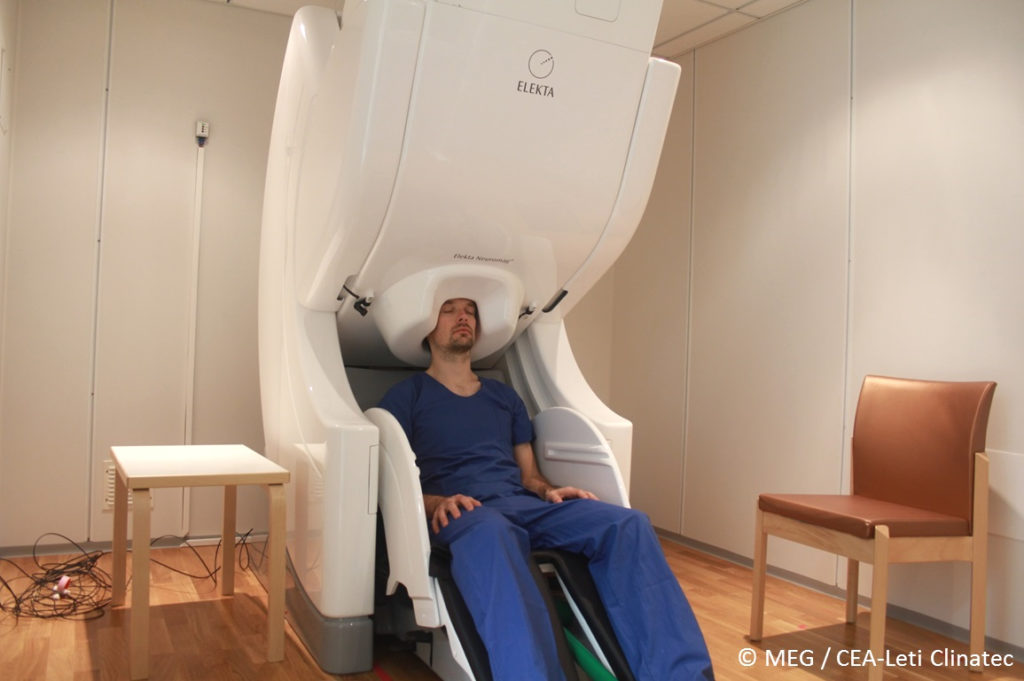The challenge of measuring endorphin levels
The analgesic effect of millimeter wave (MMW) therapy is due to the release of endogenous opioid – endorphins – in the central nervous system, namely the brain. Due to their size, endorphins cannot cross the so-called “blood-brain barrier”, a highly selective semi-permeable border between the brain and the blood vessels that irrigate it. Thus, a blood test to measure endorphin levels would not be representative of the intracerebral levels of endorphins following exposure to MMW therapy.
On the other hand, release of endorphins modulates the pain matrix by changing the neuronal activity and therefore a contrast between activity before MMW stimulation and activity after MMW stimulation should be observable.
Magnetoenchephalography as a potential solution
Magnetoencephalography (MEG) is a functional neuroimaging technique allowing the recording of the brain’s magnetic field, and thereby of the cortical activation.
Remedee Labs starts a study in partnership with CEA Clinatec (Grenoble, France) to investigate the changes in the cortical activations following the administration of painful stimuli before and after MMW stimulation through the Remedee device.

This project will contribute to a better understanding of the complex mechanisms induced by millimeter-wave stimulation and provide more information about the quantity of endorphin released using this technology.



